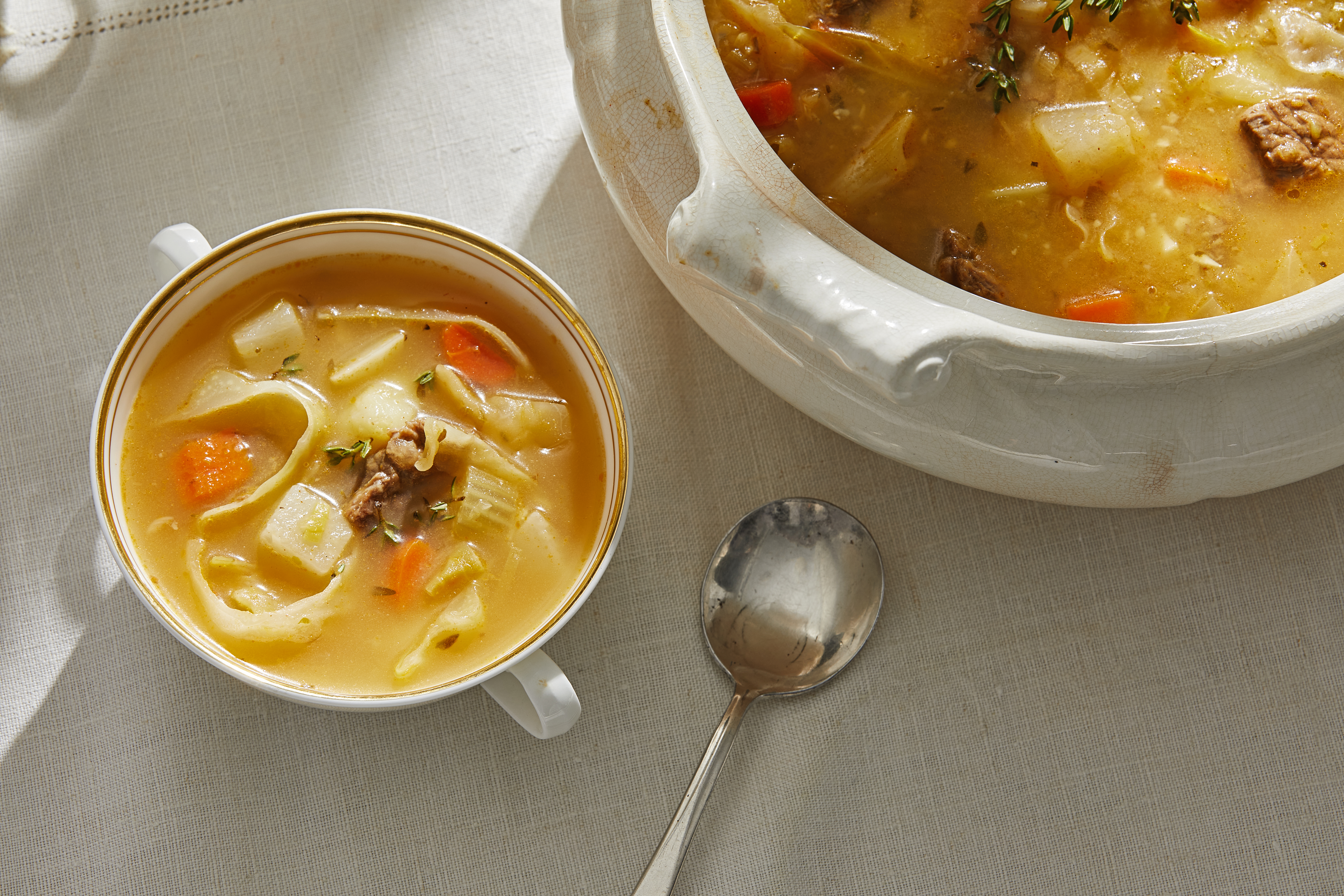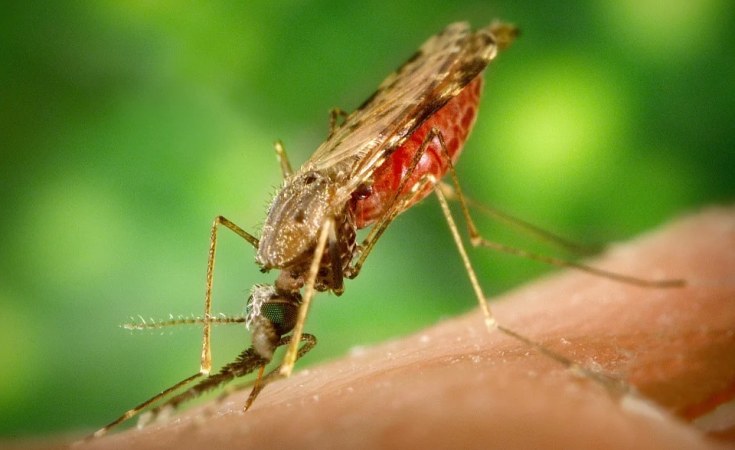
Soupe joumou, the national dish of Haiti. Tom McCorkle/photo; Marie Ostrosky/Food styling, for The Washington Post Watching news reports of Haitian kids being forced to stay home from school to prevent violent attacks in Springfield, Ohio, makes me cry about my own childhood in New York. In 1990, on my way home from school, I was jumped by five boys on the corner of Flatbush Avenue and Kings Highway in Brooklyn.
I don’t remember anyone intervening to stop the violence. When the kicks and punches came flying, what saved my life was taking the turtle position in my purple puffy coat with a backpack filled with hardcover textbooks. A shy and smart Trinidadian classmate literally picked me up, handed me my missing shoe and walked me home.
My attack, just like the threats in Ohio today, was prompted by racist remarks and discriminatory policies against Haitians from people in power, trickling down and empowering my attackers. Back then, it was HIV/AIDS hysteria and the idea that the so-called 4-Hs were to blame for the spread of the disease: Heroin addicts, homosexuals, hemophiliacs and Haitians. The same year as my attack, President George H.
W. Bush’s FDA excluded every single Haitian person from making blood donations, turning childhood bullying into government-sanctioned ostracization. Today, racist remarks have seized on an old anti-immigrant trope that Haitians are eating people’s pets, another effort to cast them as a threat to the American way of life.
It’s absurd for many reasons, not the least of which is that it willfully ignores the fact that what Haitians really eat is one of the most complex cuisines in the world, one that has influenced American cooking, too. In New York City public schools in the 1980s and ’90s, we were too ashamed to bring our own foods and were desperate to eat Wonder Bread sandwiches or regular school lunch instead. I didn’t understand why we Haitian kids were treated so differently.
In their new Nikes and baggy jeans, the other students made fun of the ribbons in our doo doo braids, shiny hard-bottom church shoes, high-water slacks and frilly dresses. They accused us of causing and carrying HIV/AIDS. The attacks and bullying became so bad, some Haitian kids with last names that were not so overtly French – Joseph, Robert, Richard or Charles – pretended to be American.
No one should ever have to seek safety by hiding their ethnicity, their culture, their food. In our case, we didn’t know that Haitian culture had already impacted American culture: Many of the pillars of Creole cuisine in Louisiana originated in what is now Haiti. Fried chile-marinated goat (taso kabrit), rice, bannann peze (fried plantains) and pikliz (pickled slaw) at Port-au-Prince Haitian Cuisine in Silver Spring in 2018.
Deb Lindsey for the Washington Post Two hundred years ago, spicy red peppers, garlic, onions and lemon juice introduced themselves in savory dishes, while the sweet dishes exploded with sugar, chocolate, coffee, cinnamon, vanilla, ginger and rum. Creole cooking was unique because many of the ingredients could not be grown in European and North American climates. When the enslaved Africans defeated Napoleon’s army in 1803, many remaining white French enslavers fled the newly founded Republic of Haiti.
Those who sought refuge in Louisiana arrived with enslaved Africans who brought their Creole recipes, such as red beans and rice (diri ak sos pwa), smothered eggplant (legum berejen), étouffée mirliton with cabbage and seafood (legum choux mirliton), Creole okra shrimp (callaloo kribish), banana fritters (beignets de figues) and more. By the 1980s, our profoundly well-seasoned cuisine still sharply diverged from the standard in the United States, not just in flavor but in labor. Today, when I see Nara Smith on social media cooking everything from scratch, it reminds me of my own mother and most other Haitian women from her generation who cooked everything from scratch too.
Pâte brisée, pâte feuilletée, bread, jam, savory spicy peanut butter, real hot chocolate, buttery caramel that they started by making their own butter and complemented by grinding their own cacao and coffee beans in mortars and pestles. Eggplant, potatoes, squash, herbs and more, in pureed and beaten forms, based on French cuisine technique yet set in the context of the new ingredients grown in the Caribbean: That is the Haitian culture that entered the United States through Louisiana Creole cooking. Diners at Port-au-Prince Haitian Cuisine in Silver Spring in 2018.
Deb Lindsey for the Washington Post In its own right, Haitian cuisine is seasoned, spicy or sweet, never bland. Our food, historically and in modern times, has always been meticulously cleaned with vinegar, lemon and salt. Before industrialization and with consistent contemporary power infrastructure outages, Haitian dishes containing meat were served stewed or well-done.
The most elegant dish served is diri djon djon, a mushroom rice, often accompanied by a spicy aphrodisiac stewed lambi (conch) that is frequently the silent star of a Haitian party or function. Upside-down pineapple cake dripping in Barbancourt rum and brown sugar is a regular contender for crowd favorite, too. Rum raisin ice cream is consistently invited to make an unannounced guest appearance.
Haitian home cooking often includes yellow ground cornmeal, served like white grits in the United States, but often with red snapper in a Creole tomato onion sauce and topped with slices of a Haitian avocado variety. Haitian food is phenomenal. It couldn’t be attacked in its own right, so politicians lied about Haitian people eating pets.
Stereotypes have circulated in the United States for decades about Chinese and other Asian immigrants eating dogs, cats and rats. It’s about playing on notions of disgust to cast immigrants as “other.” Meanwhile, as so many actual immigrant dishes have been embraced by Americans, many immigrant activists have asked: If they love our food, can’t they love us? Unfortunately, there’s also been a history of attacks on Jews by people who eat bagels, on Mexicans by people who eat tacos, on Chinese immigrants by people who eat egg rolls.
I’ve taken my Haitian mother to Michelin-starred restaurants in Denmark, Belgium and elsewhere, and she can never hold back her criticism of their lack of spice and seasoning. Once, at a regular random restaurant in Reykjavik, she asked the waiter if he could take the chicken breast back into the kitchen and add hot peppers and butter. “Mommy, all countries can’t grow hot peppers and as a result don’t automatically cook with them,” I told her quietly.
But she could not be convinced. In 2005, when our family drove to Shreveport, La., we entered an entirely white restaurant.
When the waitress brought out a plate of spicy salted cod fish and crab smothered in mirliton and cabbage, my mother had finally met her match: food she actually considered delicious. For me, it was undeniable evidence of the connection of Haitian people to America that I never knew that I needed. As long as coffee and sugar have been in the United States, Haitian people and our culture have been here as well.
Like so many other immigrant communities, we are the opposite of a threat to the American way of life. Through our food and other parts of our culture, we have enriched the American way of life, and that’s worth celebrating, not demonizing. Jenna Chrisphonte is a playwright and novelist based in New York.
We invite you to add your comments. We encourage a thoughtful exchange of ideas and information on this website. By joining the conversation, you are agreeing to our commenting policy and terms of use .
More information is found on our FAQs . You can modify your screen name here . Comments are managed by our staff during regular business hours Monday through Friday as well as limited hours on Saturday and Sunday.
Comments held for moderation outside of those hours may take longer to approve. Please sign into your Press Herald account to participate in conversations below. If you do not have an account, you can register or subscribe .
Questions? Please see our FAQs . Your commenting screen name has been updated. Send questions/comments to the editors.
.














